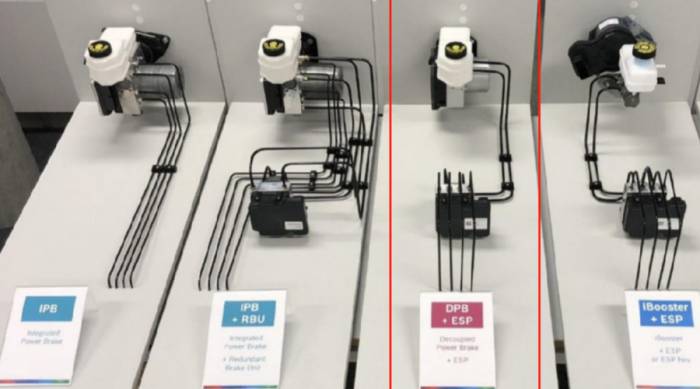Xiaomi indeed has an immense amount of traffic, with big news almost every day, and it's never absent from the hot search lists.
Yesterday, I believe everyone has seen the news about the Xiaomi SU7 veering off the track. If you haven't, let me briefly summarize what happened.
Yesterday, a Xiaomi SU7 was lapping the Tianma Circuit in Shanghai when it suddenly veered off the track at a corner. According to the driver's chat records, the vehicle suddenly lost its brakes.
Why couldn't it stop?
Friends who have played on the track with trackdays should know that the brake cooling capacity of civilian cars is limited, and thermal fade is quite serious. Basically, after about three laps, the brakes will fade. However, since most gasoline cars use hydraulic brakes, experienced drivers can sense changes in the brakes through foot feel and vehicle dynamics.
Advertisement
Electric vehicles, due to their heavier mass, generate much more heat with each brake application than traditional gasoline cars. If gasoline cars experience thermal fade after three laps, electric vehicles might experience it after just two laps.
Thermal fade is a critical point, similar to boiling water, which only happens at 100 degrees. The same principle applies to brakes; one moment the brakes are functioning well, but the next, due to exceeding the critical point, they can suddenly fail.Some netizens might wonder, didn't Lei Jun mention at the press conference that their first-ever DBP+ESP is very impressive? It's touted as a four-fold braking safety mechanism, so why did this situation occur?
First, let's clarify, the DBP+ESP solution, compared to the semi-decoupling of iBooster, DPB is fully decoupled, and the pedal doesn't sink during automatic braking, and it has a smaller volume. It also has redundancy compared to IPB, and it's even smaller in volume than IPB+RBU, making it very suitable for future L3 and L4 autonomous driving solutions. Moreover, the DBP's fully decoupled electronic braking response time and pressure buildup are theoretically better than iBooster's. Under normal driving conditions, it should be superior to previous solutions; otherwise, a car like Xiaomi SU7 wouldn't have chosen to be the first to try it.
However, the issue arises because, being fully decoupled, it's challenging to achieve variations in pedal feel, similar to the sensation of vacuum assistance. Although it exists in theory, it's a bit difficult in practice. Let's look at the structure next.
This is a two-box solution, which naturally has safety redundancy. If you want to create a "pedal feel," the ESC might need to use Bosch's low-level algorithms for adjustments. This matter is already under discussion, so everyone might want to wait a bit longer. So, it's clear now that due to such an electronic fully decoupled braking solution, it can't change the brake pedal feel due to temperature changes, and it might even pretend nothing happened and stubbornly maintain the original pedal feel, leading to the aforementioned situation of running off the track.
However, it's almost certain that this braking solution has a thermal decay monitoring function. Whether it's because the driver didn't pay attention or the reminder isn't obvious, it's unclear at the moment.
So, what should we ordinary people do?
Since solid-state batteries haven't been installed in vehicles yet, and the lightweight issue can't be solved in the short term, electric cars on the track, under full power, should "start in one lap, stop in two," because you might not know the state of the brakes at all. Moreover, if you can't achieve results in the second lap, it's even less likely in the third lap, so it's recommended to give up directly.

Consider getting a better set of brakes and tires. Although the SU7 already uses Brembo brakes, the brake pads are not racing solutions. However, it's certain that brake pads with a more heat-resistant low-metal formulation will soon enter the market, so everyone can wait for that.Driving under normal circumstances, there's no need to worry about the issue of thermal fade. Firstly, modern new energy vehicles often come with 4-piston or 6-piston calipers, which have been designed to account for the thermal fade caused by vehicle weight. Moreover, no one would continuously apply the brakes. Even if you were driving down the slopes of Mount Everest, there would be no problem. It's essential to make good use of the regenerative braking feature; it not only recovers energy on downhills but also extends the life of the brake pads.
When driving high-performance electric vehicles, it's crucial to control your desires and inner demons. Cars that could accelerate in three seconds used to cost over a million, which was out of reach for ordinary people. Nowadays, electric vehicles costing less than 300,000 can already provide a 0-100 km/h acceleration in two to three seconds. Many electric cars are already "faster than the driver," and it can be said that the vast majority of people do not have the ability to handle such powerful beasts well. Self-awareness is also necessary when driving.
Although fully decoupled braking systems have many advantages and are essential hardware for future autonomous driving, they can indeed affect the driver's judgment of brake fade during aggressive driving. This occurrence may lead to more prominent safety alerts for electric vehicles during intense driving.
Taking electric vehicles to the racetrack is still a relatively new concept, and it's hoped that everyone will exercise caution and know their limits when engaging in such activities.
Comment